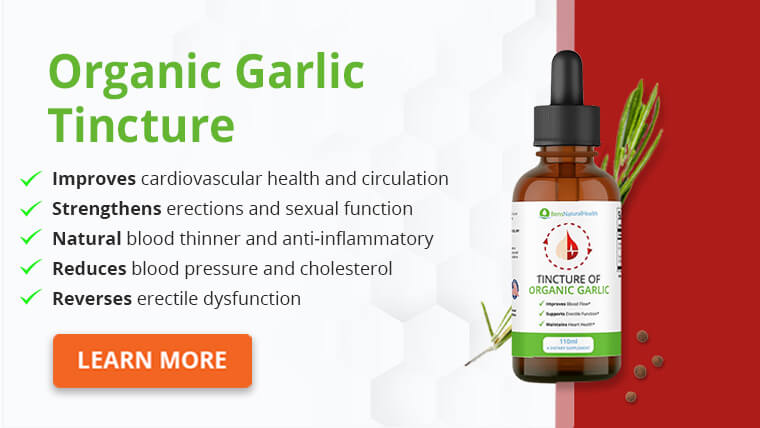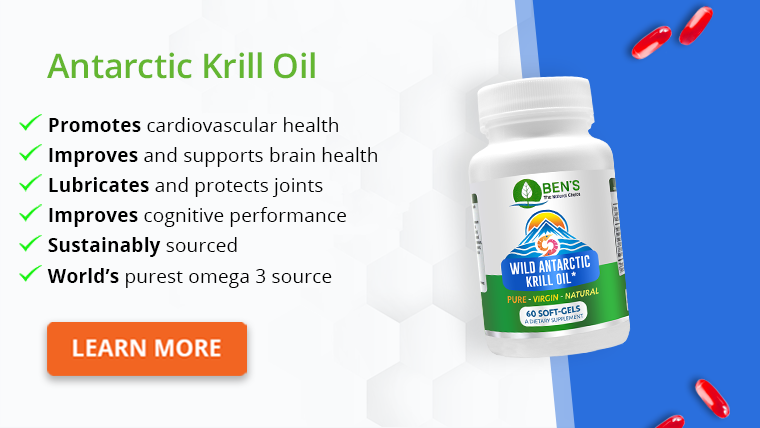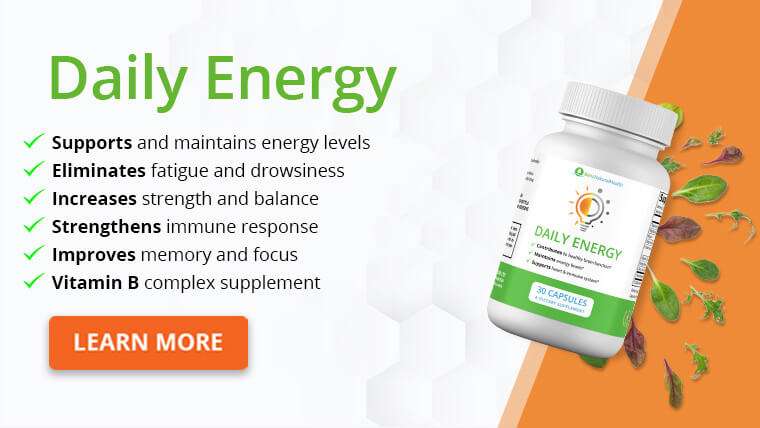- What is Eliquis?
- What is warfarin?
- Are Eliquis and warfarin the same?
- What conditions can Eliquis and warfarin treat?
- Differences between Eliquis vs warfarin
- Similarities between Eliquis vs warfarin
- Is Eliquis or warfarin more effective?
- Safety and side effect profile of Eliquis and warfarin
- Warnings for Eliquis vs warfarin
- How to stay safe when taking a blood thinner
- Natural blood thinners
- Conclusion
- Source
Your body’s ability to regulate blood clotting is essential.
If your blood thickens and clots too much, you might develop a harmful or fatal blood clot in an artery supplying blood to your heart, brain, or lungs.
But, if your blood doesn’t clot enough, you’re at risk of having severe bleeding from cuts and injuries that normally might not be life-threatening.
If you require an anticoagulant (blood thinning medication), two possible options include Eliquis and warfarin.
Keep reading for a detailed comparison of Eliquis vs warfarin.
What is Eliquis?
Eliquis is the brand name for apixaban, a prescription blood thinner. Blood thinning medications are also called anticoagulants. Eliquis works by blocking an enzyme complex called Xa, which helps your blood clot.
The Food and Drug Administration (FDA) first approved Eliquis in 2012 to help reduce the risk of stroke and blood clots in patients with nonvalvular atrial fibrillation (an abnormal heart rhythm not caused by an abnormal heart valve).
The FDA approved Eliquis again in March 2014 to help reduce blood clots following hip and knee replacement surgeries.
In September 2014, they approved it to help treat deep vein thrombosis (DVT) and pulmonary embolism (PE), which occur from blood clots getting stuck in the veins of the leg or the lungs.
Eliquis comes in 2.5 milligram- and 5-milligram tablets. You can take Eliquis with or without food, and it’s taken twice daily. The maximum daily dosage of Eliquis is typically 10 milligrams twice daily.
What is warfarin?
Warfarin is the drug name for another popular anticoagulant with the brand names Coumadin and Jantoven.
The FDA approved warfarin in 1954. Until recent years, warfarin was the only medication approved to help reduce the risk of stroke and heart attack in patients with atrial fibrillation.
The dosage for warfarin usually starts between two and five milligrams once daily. Your healthcare provider might increase the dose as needed to achieve a therapeutic dose (the amount that keeps your blood at the target thickness). Still, the dosage usually doesn’t exceed 10 milligrams daily.
Warfarin thins the blood in a different way than Eliquis. Warfarin acts by blocking vitamin K from making clotting factors which help form clots and thicken the blood.
Are Eliquis and warfarin the same?
Eliquis and warfarin are both blood thinners (anticoagulants), but they aren’t the same. Eliquis works by blocking an enzyme called Xa, which helps to clot blood, while warfarin works by blocking the action of vitamin K to thicken the blood and form clots.

What conditions can Eliquis and warfarin treat?
Eliquis and warfarin are both used to reduce the risk of blood clots and the serious complications that can arise from a blood clot.
If you have atrial fibrillation or have a history of forming dangerous blood clots, you might be a candidate for blood thinning medications.
Atrial fibrillation (Afib) is one of the most common conditions Eliquis and warfarin are prescribed. Atrial fibrillation is an irregular heart rhythm (often causing a rapid heart rate) that increases the risk of blood pooling in one of the chambers of the heart.
The longer blood pools in a heart chamber and isn’t circulated throughout the body, the more time the body has to coagulate the blood, forming a clot.
If the blood clot is carried to and blocks an artery supplying blood to your heart, you can have a heart attack. If the blood clot blocks an artery to your brain, you’d have a stroke.
Blood clots can also get lodged in a limb (the lower leg is a common site). This is called deep vein thrombosis (DVT).
Finally, a blood clot blocking blood flow in an artery to the lungs is called a pulmonary embolism (PE).
Differences between Eliquis vs warfarin
Clotting action
Eliquis and warfarin have different mechanisms of blood clotting. Eliquis blocks an enzyme called Xa, while warfarin blocks the clotting action of vitamin K.
Doses
The typical maximum dose of Eliquis is 10 milligrams twice daily (total of 20 milligrams), whereas the typical maximum dose of warfarin is 10 milligrams daily.
Monitoring
Eliquis doesn’t require routine lab monitoring, which is why it’s much simpler (and in many cases safer) than warfarin.
If you take warfarin, you’ll need to go in for regular blood draws to monitor the thickness of your blood.
You might need to go in as often as multiple times a week, but if you’ve been stable on your current dose, your healthcare provider might only want you to come in weekly, biweekly, or monthly.
The blood tests commonly monitored while you’re on warfarin include prothrombin time and your INR. The prothrombin time measures how long it takes your blood to clot. The INR (international normalized ratio) determines if your blood thickness is in the therapeutic range.
An INR of 1.1 or less is normal in healthy people. If you need to take warfarin for Afib or blood clots, an INR of 2-3 is considered normal.
If your INR is high, your blood is clotting more slowly. And, if it’s low, it’s clotting more quickly. A high INR can lead to severe bleeding problems, while a low INR might lead to blood clots.
For instance, if your INR is below 2, your healthcare provider might increase your warfarin dose to help it clot more slowly and reach a more therapeutic INR of 2-3.
Cost
According to GoodRx: A 30-day supply of 5-milligram warfarin tablets costs around $5-10, while a 30-day supply of 5-milligram Eliquis tablets costs around $270 on average.
Eliquis is a newer medication with no generic options, which is why it costs more than warfarin. Warfarin is a generic medication for Coumadin, and generic medications are less expensive.
Until the owner of Eliquis’ patent on Eliquis expires, other drug companies can’t make their generic versions.
Action time
Eliquis is shorter-acting than warfarin, which means it wears off sooner. Eliquis’s peak effect (the time when it’s working the hardest to thin the blood) is 2-3 hours after the dose. Warfarin’s peak effect is much longer at 72-96 hours.
The difference in action time is why Eliquis is usually taken twice daily while warfarin is taken once daily.
Diet considerations
There are no known food interactions for Eliquis. If you take warfarin, there are some specific precautions you need to consider regarding your diet.
Warfarin acts by blocking vitamin K, a nutrient found in many foods. If you significantly change the amount of vitamin K in your diet and don’t keep it consistent, it can change the drug’s effectiveness.
Eating large amounts of vitamin K-rich foods might mean warfarin cannot be as effective at clotting your blood. If you usually eat a consistent amount of vitamin K-rich foods in your diet but suddenly stop, it could cause warfarin to thin your blood too much.
It’s not recommended to avoid vitamin K altogether since vitamin K is found in many healthy foods like dark green vegetables. The most important thing is to keep your vitamin K intake consistent while taking warfarin.
Similarities between Eliquis vs warfarin
Both Eliquis and warfarin are used to help thin your blood and prevent potentially harmful blood clots.
Even though they influence the blood clotting process differently, they have similar side effects, such as easy bruising and increased bleeding. They are also used to treat similar conditions.

Is Eliquis or warfarin more effective?
A study of over 18,000 people with atrial fibrillation and at least one risk factor for stroke was published in 2011. Patients taking Eliquis had less major bleeding, less prevalence of hemorrhagic stroke, and less death from any cause compared to warfarin.
Researchers concluded that Eliquis is superior to warfarin in patients with atrial fibrillation at preventing stroke and embolism (blood clot blocking an artery or vein), causing less bleeding, and resulting in lower death rates.
A 2019 review of studies found that Eliquis is superior to warfarin in patients of all body weights, from low body weight to very high body weight. Eliquis is not only superior in efficacy, but it also tends to be safer.
Safety and side effect profile of Eliquis and warfarin
Taking blood thinners can lead to severe bleeding and low blood count. This can make you feel dizzy, tired, and nauseous.
Eliquis
Some of the more common side effects of taking Eliquis include:
- Bleeding from cuts that take longer to stop
- Bleeding from your nose or gums
- Dizziness
- Bruising easily
- Minor bleeding
- Nausea
Warfarin
The most common side effects of warfarin include:
- Increased bruising
- Prolonged nosebleeds/increased bleeding in general
Can you take Eliquis and warfarin together?
You should not take Eliquis and warfarin together. Taking two blood thinners at the same time could lead to severe bleeding issues.
What is the safest blood thinner to take?
Eliquis is among some of the newer anticoagulants, which are considered safer and at least as effective when compared to warfarin. According to a study of some of the newer anticoagulants, Eliquis had the lowest risk of major bleeding.
Warnings for Eliquis vs warfarin
Eliquis has a black box warning, the highest level of caution the FDA gives. The warning is regarding the increased risk of blood clots if you suddenly stop taking Eliquis.
Stopping Eliquis should be carefully done under the guidance of a qualified health professional. When stopping Eliquis, watch out for symptoms of a blood clot which can include:
- Throbbing or cramping pain, swelling, redness, and warmth in your arm or leg
- Sudden difficulty breathing
- Sharp chest pain (may be worse when you breathe in)
- Cough or coughing up blood
Warfarin also has a black box warning regarding the risk of major bleeding, which could be fatal. According to the black box warning, bleeding is more likely to occur when you first start taking warfarin, with higher doses, if your INR is greater than 4, if you undergo trauma, and if you have other risk factors for bleeding, such as a history of gastrointestinal bleeding.
Which medication is cheaper?
Warfarin is much cheaper than Eliquis because it is a generic version, while Eliquis is more expensive because it’s only available as a brand name.
Eliquis is also much newer than warfarin, and newer medications tend to be more expensive than medications that have been around longer.
What do you need to avoid when taking Eliquis and warfarin?
Diet adjustments
Warfarin comes with more dietary considerations compared to Eliquis. While there aren’t any specific foods to avoid when taking Eliquis in terms of food/drug interactions, there are potential foods to avoid when taking warfarin.
Warfarin interacts with vitamin K, a nutrient that promotes blood clotting. While you don’t necessarily need to avoid eating vitamin K-rich foods altogether, you should avoid making drastic changes in your vitamin K intake, which can alter the effectiveness of warfarin.
Highest vitamin K content:
- Kale
- Spinach
- Collards
- Turnip greens
- Beet greens
- Dandelion greens
- Mustard greens
Other moderate vitamin K foods:
- Spinach
- Brussel sprouts
- Broccoli
- Onions
- Lettuce
- Cabbage
- Asparagus
- Endive
- Parsley
- Okra
Drug interactions
Eliquis
Some drugs which might interact with Eliquis include:
- Mifepristone (a medication used to end an early pregnancy)
- Other drugs that can cause bleeding/bruising (including antiplatelet drugs and other blood thinners)
- Certain antidepressants (including SSRIs and SNRIs)
Warfarin
Some prescription medications are known to interact with warfarin, so you should ask your pharmacist about taking warfarin if you’re already taking medications like:
- Certain antibiotics
- Yeast or fungal medicines, such as fluconazole
- Thyroid medicines
- Amiodarone (a heart medicine)
- Carbamazepine (a seizure medicine)
Disease interactions
Certain people shouldn’t take blood thinners like Eliquis or warfarin. You might not be a good candidate for blood thinners if you have a history of gastrointestinal bleeding, stomach ulcers, uncontrolled high blood pressure, low platelet count, or bleeding disorders.
Alcohol
Alcohol can act as a natural blood thinner by preventing blood cells from sticking together. Drinking large amounts of alcohol might increase your risk of severe bleeding if you’re taking a blood thinner like Eliquis or warfarin. Therefore, you should aim to keep your alcohol intake low- to moderate if you choose to drink.
Pregnancy/breastfeeding
Blood thinners like Eliquis and warfarin shouldn’t be taken during pregnancy. Taking these types of blood thinners can increase the risk of hemorrhaging (losing a large amount of blood due to a broken blood vessel) and problems for the mother and baby.
Blood thinners are only prescribed during pregnancy if the potential benefits outweigh the risks. If you’re taking a blood thinner and are planning to become pregnant, you should notify your healthcare provider immediately.

How to stay safe when taking a blood thinner
While no one can prevent accidents from happening, there are some steps you can take to stay safe while taking a blood thinner. Practicing these habits can reduce the likelihood of developing severe bleeding.
Consider a pill organizer
Accidentally taking too much Eliquis or warfarin can be problematic. Taking too much might cause bleeding issues, while accidentally missing doses can increase your risk of developing a harmful blood clot. Pill organizers can help keep you on track with your medication dosing schedule.
Be cautious when using sharp objects
If you’re using knives, razors, or other sharp objects, be extremely careful and wear protective clothing when you can. Accidentally cutting yourself can lead to more severe blood loss than if you weren’t taking a blood thinner. Try to offload jobs that require using sharp objects (cutting wood with an axe, for instance) to others when you can.
Keep up with routine lab monitoring if you’re on warfarin
Going in for routine blood work helps your healthcare provider adjust your warfarin to make sure you’re taking the right amount. If you skip these lab tests, you might be at higher risk of complications from taking too much or too little warfarin.
Natural blood thinners
High-salicylate foods
Salicylates are compounds found in some plant foods. Salicylates can block the action of vitamin K, which facilitates blood clotting.
Derivatives of salicylates, such as salicylic acid, are used to make aspirin. Aspirin is used as a blood thinner (in patients not requiring medication like Eliquis or warfarin) to reduce the risk of blood clots.
Some foods and drinks particularly high in salicylates include:
- Vegetables like broccoli, cauliflower, cucumber, mushrooms, radishes, spinach, and zucchini
- Tomatoes
- Fruit juice (apple, grape, orange, and grapefruit juices)
- Fruits like apples, avocadoes, berries, cherries, grapes, peaches, and plums
- Spices like thyme, rosemary, curry powder, paprika, and garam masala
- Black, green, and herbal teas
Vitamin D
Vitamin D has an anticoagulant effect, which means it can act as a blood thinner. Low vitamin D levels are associated with an increased prevalence of deep vein thrombosis (DVT), which can lead to a pulmonary embolism.
There aren’t many foods that are naturally rich in vitamin D. Some foods that contain vitamin D include:
- Cod liver oil
- Salmon
- Swordfish
- Tuna fish
- Orange juice fortified with vitamin D
- Dairy and plant milk fortified with vitamin D
- Sardines
- Beef liver
- Egg yolk
- Fortified cereals
If you can’t consistently get enough vitamin D from your diet, consider taking a vitamin D supplement.
Conclusion
Warfarin and Eliquis are blood-thinning medications. Eliquis is newer and considered safer/more convenient to use, while warfarin has been used since the 1950s.
Eliquis is superior to warfarin in many ways (e.g., no dietary interactions and no routine lab monitoring). But it is much more expensive out-of-pocket compared to warfarin.
Eliquis and warfarin have similar side effects, risks, and precautions, even though they work to thin the blood in different ways.
Explore More







